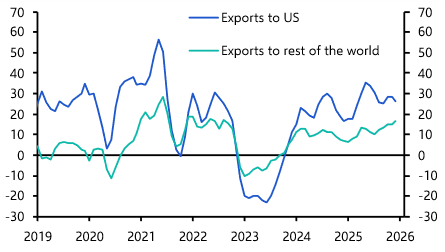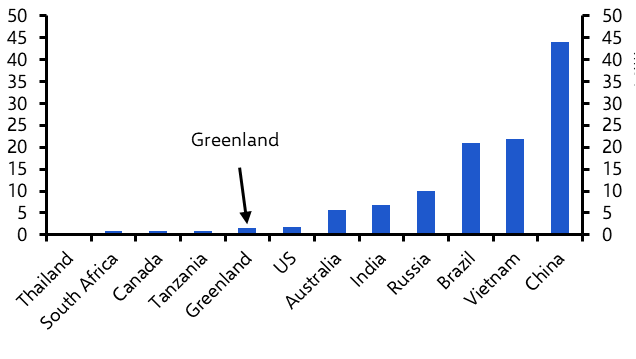Late last week, Donald Trump did what he does best: lob a grenade into the machinery of government. In this case, the target was the Bureau of Labor Statistics (BLS), the body responsible for producing much of America’s core economic data. Following the release of a weaker-than-expected labour market report, Trump took to social media to declare that the head of the BLS would be dismissed.
The market reaction? A shrug. Equities remain close to all-time highs. Bond yields barely flickered. For the uninitiated this might be taken as evidence that institutional integrity – or the lack of it – simply doesn’t matter much for economic and market outcomes. That would be a grave mistake.
Accurate, impartial economic data is the lifeblood of sound policymaking. Without it, central banks and governments operate in the dark, unable to set monetary and fiscal policy so as to keep economies at full employment and maintain price stability. The same is true for investors, who must be able to trust the numbers that underpin asset valuations. But more fundamentally, robust institutions – the rule of law, an independent judiciary, free media and credible public agencies – are cornerstones of economic progress. As Daron Acemoglu and James Robinson argued in Why Nations Fail, weak institutions are why North Korea is impoverished while South Korea thrives; why the US is rich while Mexico is ensnared in the middle-income trap. Institutions matter – and they matter a lot.
So why didn’t the markets flinch?
Part of the answer may be that, while there is no evidence to support Trump’s claim that the BLS commissioner manipulated figures for political purposes, there are legitimate questions over the health of official US data. The UK suffers from a similar problem and, coincidentally, the head of its official statistics body, the Office for National Statistics, was also shunted aside earlier this year, albeit in less public circumstances. A common issue in both countries is a decline in survey response rates which has accelerated post-COVID. The problem appears particularly acute with labour market data. If new leaders are able to get to grips with this problem then this would be a positive development – although that would also require a significant step-up in public funding, which is under pressure in both countries.
Even if taking a less charitable position, the ambiguity of the situation offers some cover. It’s unclear whether the firing will lead to any real change in how the BLS operates. If the goal is to produce more flattering data, then – ironically – that could lead the Fed to run tighter monetary policy, believing the labour market is stronger than it is. That might mean higher interest rates, not the cuts that Trump wants. On the other hand, if the politicisation of data feeds a broader erosion of institutional trust that depresses potential growth, it could plausibly result in lower short-term interest rates, higher risk premia and thus long-term interest rates, thereby steepening the yield curve. In short, even if one assumes the worst, the implications for monetary policy are murky.
At the same time, not all institutions are equally important for markets. When Prime Minister Liz Truss and Chancellor Kwasi Kwarteng dismantled the UK’s fiscal guardrails in their now-infamous “mini” Budget in 2022 that was unequivocally negative for gilts because it pointed to a fundamental shift in the direction of UK fiscal policy. In contrast, if the quality of official statistics deteriorates – or their production becomes more politicised – then the implications for bonds and equities are perhaps less immediately obvious.
Related to this, there is also the uncomfortable truth that institutions can deteriorate slowly and insidiously, with little immediate impact on markets. History is littered with examples of long economic expansions occurring alongside creeping authoritarianism and institutional decay. Markets are not always good at pricing in gradual decline – until it suddenly becomes acute.
That said, it would be premature to write the obituary of American institutions. Yes, the President has launched an assault on free trade, threatened central bank independence, targeted universities and now appears to be compromising the integrity of economic data. Yet for all this, the United States still possesses enviable strengths: a deep capital market, a world-beating technology sector, an entrepreneurial culture, and an open (if sometimes strained) legal system. These are not easily undone.
What has begun to weigh on growth is not the high-profile attacks on institutions but rather the more mundane, yet economically potent, restriction of labour supply. Immigration clampdowns are constraining workforce growth, helping to keep the unemployment rate at 4.2% even as hiring slows. In the long run, this could prove more damaging than bombast on social media.
The key point is this: institutional erosion does not move in linear fashion. There are degrees of degradation. Manipulating economic data is one thing; undermining the judiciary or property rights is another. For a country as robust as the United States, the decline would need to be both deep and sustained before it seriously imperils long-term growth. The fact that the US currently looks better placed than any other country to exploit the opportunities made possible by the AI revolution adds to the reasons to expect it to outperform most major advanced economies over the next decade or so.
But if the attacks intensify – and especially if they morph beyond data and into the legal and corporate fabric – then all bets are off. The US institutional system is under strain, but not yet at risk of failure. However, recurring stress may weaken its resilience, allowing minor dysfunctions to accumulate into broader instability – a process that markets may be slow to detect, but quick to react to once the damage is done.
In case you missed it
- The lack of credible official Chinese GDP data is why we’ve been publishing the China Activity Proxy for the past two decades: it’s designed to provide the accurate and reliable picture of economic growth that the National Bureau of Statistics is politically (and operationally) unable to deliver. Our latest CAP update suggests the economy is growing around 1.5 percentage points slower than the rate shown in official data.
- India is under US pressure to bring a complete stop to Russian oil purchases – a move it could make with relative ease but is unlikely to. Deputy Chief EM Economist Shilan Shah unpacks the domestic politics and geo-economic interests shaping the Modi government’s strategy.





